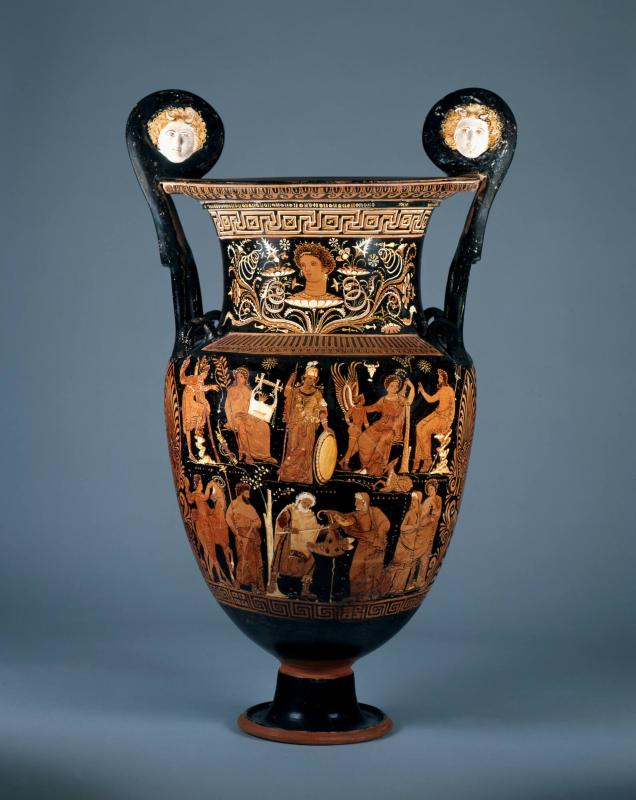
This object was returned to the government of Iraq following research by the Carlos revealed it had been looted from the Iraq Museum.

After being contacted by Italy’s Ministry of Culture, the Carlos was able to confirm the krater was purchased by a Swiss private collector from the gallery of an antiquities trafficker in the early 1980s. The facts contradicted what the Carlos had been told about the krater at the time of purchase.
Repatriations of antiquities from US museums have been in the news a lot lately. Just last month, the Carlos announced the repatriation of five objects to Italy after two and a half years of conversations. When museums talk about repatriation, we are referring to the voluntary return of cultural property to the country of origin, source community, or original owner. For antiquities, discussions around repatriation revolve around the country of origin – where the object came out of the ground. The Carlos has engaged in repatriations that were initiated by internal museum research, as well as requests from a country of origin. Regardless of who has originated a repatriation, it is important for people to understand the process is nuanced and multi-faceted.
One of the most important aspects of the repatriation process is research. For antiquities, the Carlos will only repatriate objects based on evidence that an object was stolen from its rightful owner, illegally excavated, and/or illegally exported. If an object’s provenance contains the names of people known or suspected to have been involved with antiquities trafficking, this certainly raises a red flag and warrants further research. However, suspicion is not enough. We need evidence to pursue repatriation. The types of evidence we and the countries of origin are looking for include court cases involving the object, non-scientific photographs of the object coming out of the ground or being restored under questionable conditions, and auction records that contradict what we’ve been told about an object’s provenance. Even with the access to resources that we have today, researching an object’s provenance and critically evaluating the available evidence is time-consuming.
We must use our best judgment when weighing evidence. There will not always be proof beyond a reasonable doubt. If our research of the available evidence exposes inconsistencies in an object’s provenance and suggests the object was illegally and/or unethically removed from its country of origin, then we will proceed with repatriation. When working to reach an agreement, many people are brought to the table – Emory University council, outside US council, and foreign governments, just to name a few. Arriving at the final terms of an agreement can take years due to the number of parties involved and the complexities of the conversation. Often, part of the agreement will cover how the result of the process will be communicated by both the museum and the country of origin through gallery labels, the museum website, and press releases.
There is no roadmap for repatriation, and no two cases will be the same. As we move forward with raising our own standards and practices, we will make mistakes. But know that we are trying to do the right thing, and the right thing takes time.




